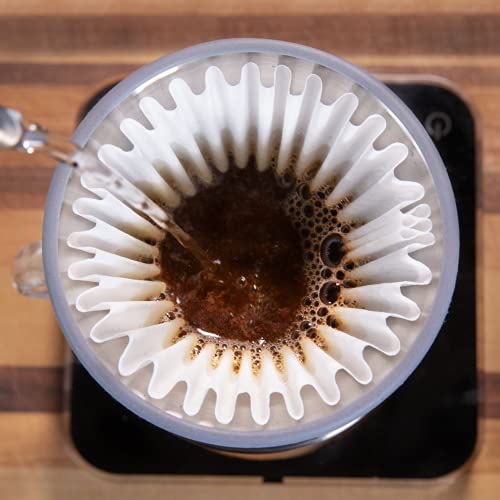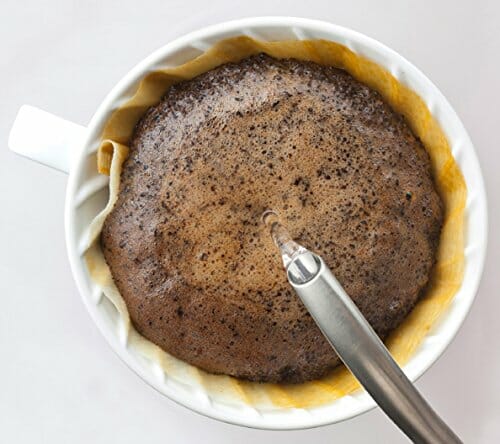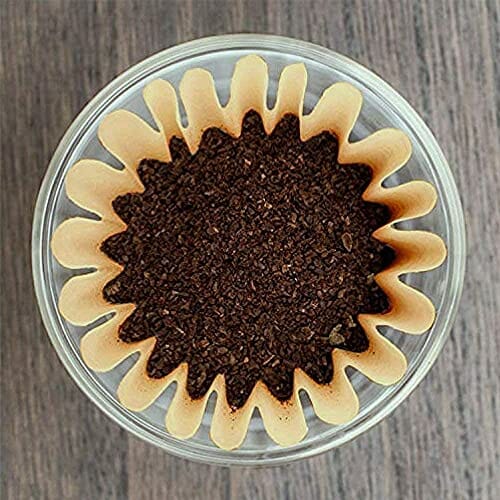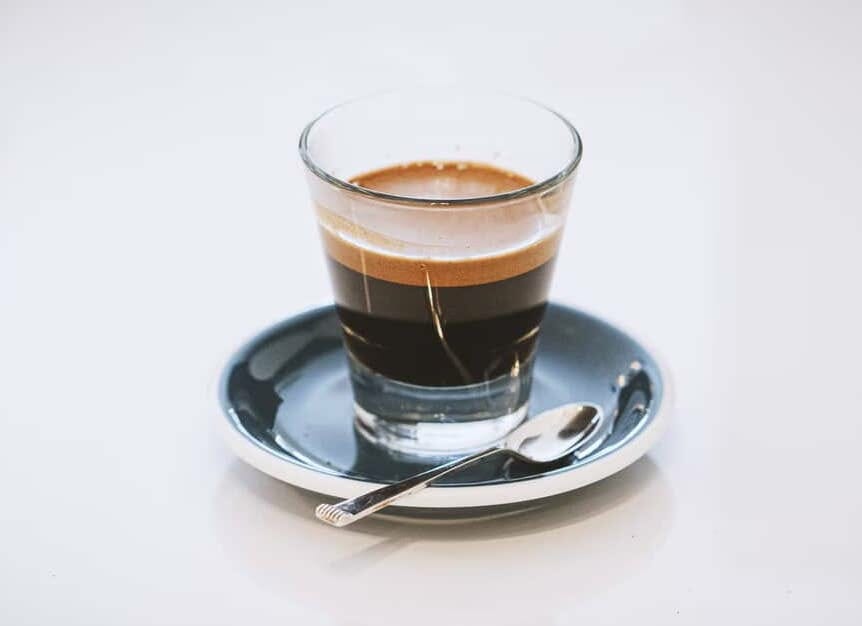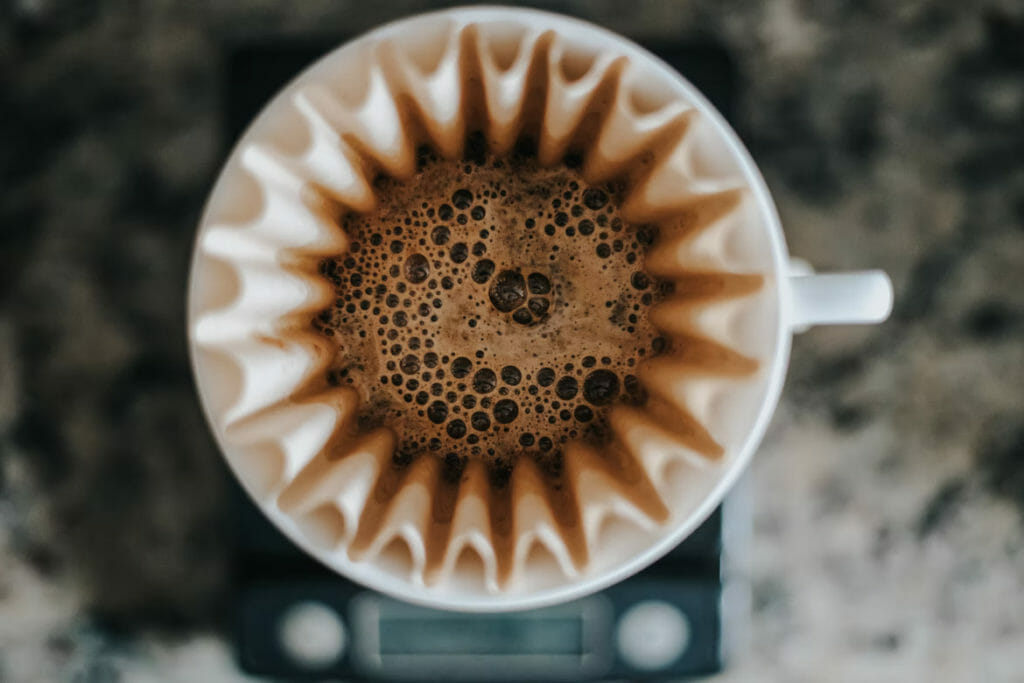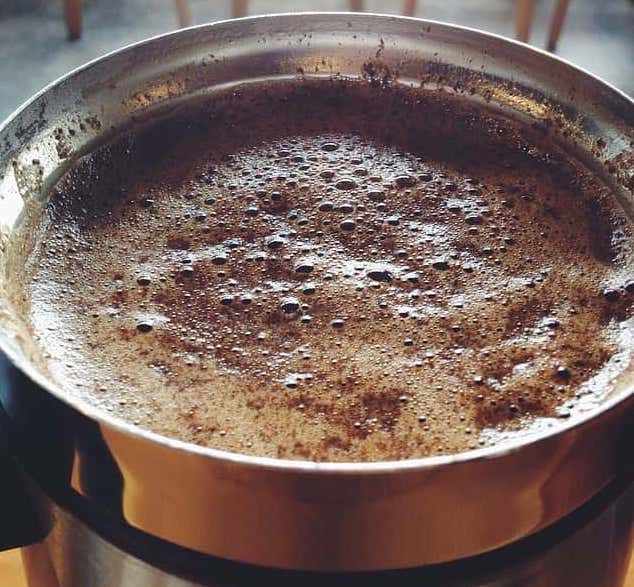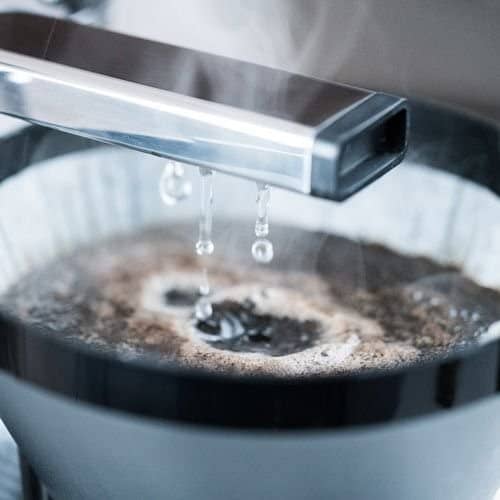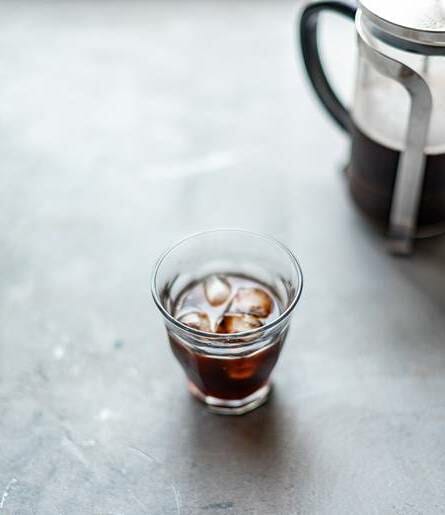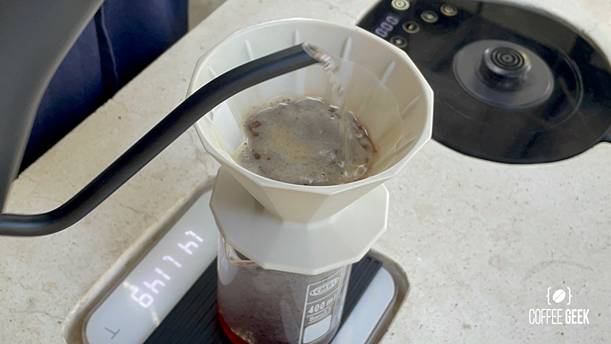You must have heard of the term “coffee bloom” from reading or watching some coffee brewing technique and decided to look it up to understand the context better.
In this article, I will explain what exactly coffee bloom is, how it works and affects the quality of your cup of coffee, and how to pull it off in your coffee brewing routine.
What Does Blooming Coffee Mean?
To understand what a coffee bloom is, you have to understand the concept of degassing and how beans degas.
And to get to the bottom of this, you need to go back to the roasting process.
Coffee Beans Degassing
Basically, the degassing process is the process of coffee beans releasing different gases, including carbon dioxide as one of the major ones.
In fact, it’s cited that nearly 90% of the gases released from roasted coffee are carbon dioxide.
This is a natural thing that all coffee beans go through once they’re roasted, so no need to panic.
So where are these gases from? They’re usually formed inside of the coffee bean during the roasting process.
When they’re roasted, the color changing from light to darker brown isn’t the only significant transformation. There is a lot more going on under the surface that’s harder to observe by the naked eye.
A lot of different chemical reactions occur as the sugars and other flavor compounds are slowly broken down, resulting in the formation of gases like carbon dioxide. And they’re trapped inside the beans.
Some of them can get released during roasting. For example, when you hear and see the cracks of coffee roasted, that’s when the build-up of gases applies too much pressure on the walls of the beans.
But most of them stay trapped inside and are slowly released after the roasting ceases.
Why Should You Let Coffee Rest After Roasting?
It’s exactly to release some of the pent-up carbon dioxide, or else it can impact the packaging process as well as the brewing process and the extracting flavor.
If the beans are packed too early, the build-up of carbon dioxide can get out of hand and ruin the packaging.
Using coffee grounds when they’re not given enough rest to degas may not give you the satisfying result you’re looking forward to either.
When the hot water hits the ground coffee, the carbon dioxide can come rushing out as it’s quickly released. You can easily observe this on brewing methods such as the French Press and Pour-Overs.
Foams, swellings, and bubbles in the coffee are actually air bubbles as the coffee releases carbon dioxide.
And since carbon dioxide repels water, the hot water can’t contact the grounds properly, leading to lackluster extraction of flavors.
Some also argue that carbon dioxide tastes sour, so it might become infused into the brew, resulting in an even less pleasant coffee drink.
That’s why most coffee roasters would advise you to wait around three days to a week after the roast date as a general window frame to enjoy the amazing coffee at its peak.
Ground Coffee Degassing
Okay, so how about coffee grinds? What happens to the gases when you grind coffee?
The degassing is actually accelerated once the beans turn into coffee grounds.
This is due to the disruption of their structure and increased surface-to-volume ratio.
Some findings even report that roughly 45% of the carbon dioxide is released within the first 5 minutes after grinding.
So, since carbon dioxide sounds so bad, should you use pre-ground coffee instead of whole beans?
The answer is no.
With the more gas release, the coffee grounds also become stale much faster and the volatile compounds are also gone with the wind. And staleness is going to spoil the taste, aroma, and overall quality of your cup of coffee.
Therefore, as I’ve been repeatedly saying in every article, instead of getting pre-ground coffee, please grind your own beans right before brewing coffee to get the freshest and highest quality brew all the time.
And so, having gases like carbon dioxide in your coffee isn’t necessarily a bad thing. It can indicate that your beans are freshly roasted coffee.
Other than improving shelf life, knowing when to best package and brew fresh coffee with an ideal amount of carbon dioxide inside can better the extraction process and the quality of your cup of coffee as well.
For example, for coffee drinkers who believe that the crema improves their espresso drinking experience, having a good amount of CO2 in the fresh-roasted beans can add a more prominent layer of crema to your good coffee.
Therefore, the key isn’t to have a complete gas release as soon as possible but to have enough inside for optimal freshness and quality until the beans are used.
Why Coffee Bloom Is Important
So, where does coffee blooming come into play?
We need to preserve some gas so the beans stay fresh, but the gas can impede the extraction process.
Therefore, for better extraction, the barista has to let the coffee “bloom” before getting on with the real brewing phase.
What Does It Mean To Let Coffee Bloom?
The phrase refers to the act of adding just enough hot water over the grounds bed and letting it sit for a short while.
So, what does blooming do to coffee?
It helps the coffee bubble up as it releases the unwanted CO2 still stuck inside so that hot water can properly come into contact with the grounds afterward.
How Long Should You Let Coffee Bloom?
For the bloom time, I suggest 30 seconds. But depending on how much coffee you’re about to brew and how fresh the beans are, you may also go for 45 seconds or even about a minute.
For example, if it’s still within one week after the roast date, 45 seconds can be appropriate. But after that, go for the standard 30 seconds.
Believe me. That extra 30 seconds to your routine will be worth it. You’ll have an amazing coffee sight to see and a better cup of Joe to enjoy afterward. A bargain if I’m being honest.
How Do You Make Coffee Grounds Bloom?
Whatever coffee maker you use, the general process is essentially the same.
- Pour just enough hot water over the grinds to bloom coffee
- Let it unfold in 30 seconds
- Move on with your routine per usual
Keep in mind that the sum of the amount of hot water you use for both blooming and brewing should meet the coffee-to-water ratio you have in mind for your coffee.
Don’t go around taking the blooming water outside of the equation and ending up making coffee that’s too weak for your personal taste.
How Do You Bloom A Pour-Over?
Some of the most popular types of Pour-Over coffee makers are the Hario V60 and Chemex.
The former is a dripper cone and the latter has a cone-shaped top chamber. Both are capable of making drip coffee using paper filters, but they call for manual efforts, including in the process of blooming.
Let me show you how to effortlessly pull off blooming a Pour-Over coffee.
- Step 1: Fold the designated paper filter of the coffee maker and put it in place.
- Step 2: Soak the filter with hot water to preheat the coffee maker and the filter. Discard the water afterward.
- Step 3: Add fresh-roasted medium-coarsely ground coffee to the filter.
- Step 4: Add enough water to the coffee maker to have the grounds uniformly soaked but not dripping wet and watch the bubbles and smell the delicious coffee aroma for 30 seconds.
- Step 5: Slowly pour the rest of the water around the grinds. For the best brew result and ease of use, utilize a gooseneck kettle.
For more details about these interesting coffee-making devices and how to make the most out of them to pull out the fine taste of coffee, head over to my article zooming into the Pour-Overs.
Should You Let A French Press Bloom?
Yes! Definitely! Absolutely!
Some may argue that a coffee bloom on French Presses isn’t necessary.
With Pour-Overs, not all of the grounds come into contact with the water at the same time. So it matters to pull the bloom for an even extraction of flavor.
But, since French Presses brew coffee by fully immersing the beans in hot water, it doesn’t really matter because they have more surface area to contact the water the entire time.
But you’ve read about the effects of CO2 on your brew. So why wouldn’t the flavor extraction process be at least a bit compromised when brewing French Press coffee?
If you’re a frequent user of this device, you must have seen some coffee grounds stuck on the surface and don’t get properly extracted.
So why not add a few stirs and wait for an extra half a minute to help release the unnecessary CO2 for a better brew?
And the only way to find out whether making coffee bloom improves the flavor profile and overall quality of your French Press or not is to test it out and see for yourself.
So, how do you make a French Press bloom?
- Step 1: Add a bit of hot water into the French Press to preheat it. Discard the water afterward.
- Step 2: Add French Press coffee grounds to the device.
- Step 3: Add enough water to the French Press to soak the grounds. Use a spoon to quickly stir the mixture to make sure that no grounds are left out.
- Step 4: Put the lid on to prevent loss of heat, set a timer for 30 seconds, and wait.
- Step 5: Add the rest of the water into the beaker and use a spoon to gently stir again. Put the lid back on and wait a few minutes more for the brew to steep.
- Step 6: Press down the plunger to enjoy the delicious flavor on top.
And like the Pour-Overs, I recommend using a gooseneck kettle to easily master the pour.
For more detailed instructions on how to use a French Press, check out my past article.
Should You Bloom Coffee In Automatic Drip Coffee Makers?
The convenience that comes with automatic drip machines has persuaded the majority of coffee drinkers in the U.S. to get one to satisfy their daily caffeine needs for at least a decade.
So I understand that adding a manual step to the effortless brew can be a hassle.
But if drip-style Pour-Over coffee makers can benefit from some good bloom, why wouldn’t your automatic drip machines get some more flavor from the extra mile?
After adding the grinds to the filter basket and before starting the brew cycle, you should heat up some water separately for coffee blooming.
The appropriate brewing temperature is the near-boil point between 195 to 205 degrees Fahrenheit (91 – 96 degrees Celsius). You can use a thermometer to get the right temperature.
If you don’t have one and end up boiling the water all the way, you can let it cool off for around a minute before putting it to use.
Then, like my instructions for the Pour-Overs and French Press coffee makers, add enough water to evenly soak the grounds resting in the filter basket to let them bloom.
Since drip machines can typically make more coffee than the manual brewers I mentioned above, you can let the coffee bloom for a bit longer. Think 45 seconds to over a minute.
Remember to put a carafe below the brew basket from the start because you never know whether some of the bloom water may seep through the ground bed.
You will see that the hot water sprayed by the drip machine will be more evenly distributed over the grinds afterward, instead of causing the usual sinking hole in the middle of the bed.
And naturally, we can expect a better extraction as a result.
Do You Bloom Espresso?
Yes, we do bloom espresso. But in espresso machines, it goes by a different name called “pre-infusion”.
The phrase refers to the process of infusing the ground beans sitting in the portafilter with water before the actual shot pulling extraction action that involves a high pressure.
And similar to the bloom, pre-infusion also only involves just enough water to soak the coffee puck.
The difference is that pre-infusion is performed under low pressure (typically line pressure) to be able to penetrate the puck properly.
This process helps create a better water way to improve the water flow rate and coffee-to-water contact of the actual extraction.
The result is a more flavorful shot of espresso with no areas left under or over-extracted.
Many espresso machines come with this pre-infusion technology so you don’t have to raise any arm.
One example is the premium Breville Barista Express, which is the long-standing top on my list of the best espresso machines in the market.
Do You Bloom Cold Brew?
If you’re familiar with making this Cold Brew drink, you’ll know that the 2 popular brewing methods are the Immersion and Filter and the Slow Drip.
And both don’t necessarily have the coffee bloom to make a quality batch of Cold Brew.
But why don’t you give it a try and see whether the hot bloom method adds any significant difference?
The beans are ground very coarsely and soaked in enough hot water for a standard 30-second period or more depending on how much coffee you’re making.
And then you add cold water and let the Cold Brew coffee steep for 12 – 24 hours per the usual Cold Brew recipe.
Why Is Your Coffee Not Blooming?
If your coffee is not blooming like it’s supposed to, it may have been degassed almost completely.
This means it isn’t fresh anymore and you shouldn’t brew with it, especially if it’s become stale due to oxidation from packaging that’s not sealed properly.
It may also be because of the roast level. Darker roasts release gas faster due to more deterioration.
To Wrap Up
To be the true coffee aficionado, you need to experiment on your coffee journey. And that includes adding blooming coffee to your agenda no matter how intimidating or bothersome it sounds.


